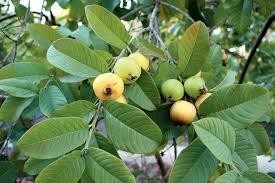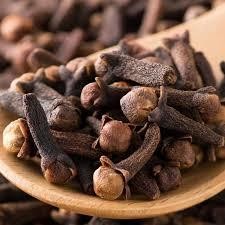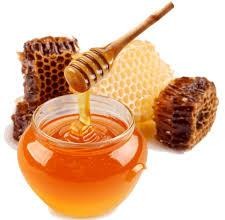Ijraset Journal For Research in Applied Science and Engineering Technology
- Home / Ijraset
- On This Page
- Abstract
- Introduction
- Conclusion
- References
- Copyright
Formulation and Evaluation of Herbal Toothpaste
Authors: Mr. Akash Kailas Shelke, Mr. Pratik Mahadev Kokate
DOI Link: https://doi.org/10.22214/ijraset.2025.66698
Certificate: View Certificate
Abstract
Toothpaste is commonly used product by all individuals. Toothpaste is generally used for cleaning of teeth and mouth. It is also used to treat many disorders of teeth. Many dentists recommend to use toothpaste to treat disorder like sensitivity, Chronic gingivitis. Herbal toothpastes can be prepared using different herbal extract of many crude drugs having antibacterial, antimicrobial activity. Herbal formulation of toothpastes are prepared using herbs like ginger, Cassia, simmia, Celastrus, paniculata, Vateria, indica extracts, Babul leaves extract, Ginger extract, Lemon oil extract, Neem stem & bark, Babul leaves, Gauva leaves, Kalmi bark etc. These herbal toothpastes can be evaluated by different tests like Physical Examination, Relative density, Abrasiveness, Determination of spreadability, pH determination, Homogenicity, Foaming Stability, Determination of moisture and volatile matter, Moisture content, Foaming character, Organoleptic evaluation, pH, Fragrance test, Shape retention, Storage stability, Total flavonoid content estimation of Tooth paste Formulation, Stability study (Storage stability), Antimicrobial activity of toothpaste etc. The main objective of this review article is to compile the available information related to herbal toothpaste like its introduction, different formulations and different parameters on which these herbal toothpastes can be evaluated. This information can be used by many researcher who wants to make research in this area.
Introduction
I. INTORDUCTION
Toothpastes are the best preventative approach to oral health. Many where commercially stupid Toothpastes are said to have antimicrobial properties, but little research has been done to analyse this these arguments. It is quite understandable that more than 2000 years ago we participated use toothpaste to clean the enamel and toothpicks and brushes still need to be done like the older exercise. Today's toothpastes follow many of the same concepts that have been developed over the centuries then. The use of natural or Ayurveda medicines for the primary and oral condition of the normal condition is an integral part of Indian tradition. There are many Ayurveda toothpastes available in the market claims to have excellent antimicrobial properties.
Herbal-based toothpaste has been used since ancient times in ancient life and is one of the most important parts of oral health care. The production and development of toothpaste production began in China and India, from 300- 500 BC. At that time, crushed bones, crushed eggs, and mussel shells were used as abrasives as part of tooth cleaning. Modern toothbrushes were developed in the 19th century. After advances in medicine, chalk and soap were added to these forms.
Soon after independence, several developments in the formulation of various solvents had begun, sodium lauryl sulphate was used as an emulsifying agent. At present, the focus has shifted to the release of active ingredients during the development of the formulation to prevent and / or treat oral disease.
In herbal medicinal treatments, it has been found that part of the flora is used for healing and treatment of diseases. Herbal remedies have been widely used throughout human history and stages According to the World Health Organization (WHO), about 80% of people used natural the number one medicine in healthcare. In addition, more than 35,000 plant species have been proposed use in various human cultures around the arena for scientific purposes. Some of them are great antimicrobial, anti-diabetic, anti-viral, anti-cancer and anti-fungal. Every other word has oral hygiene exercise preserves the mouth and teeth to save dental problems, most often teeth cavities, gingivitis, periodontal (gum) disease and terrible breath. One of the functions of speech hygiene is protection against oral cavity infections. Oral infections are caused by plaque-forming microorganisms and yeast. Neem has antibacterial and anti-inflammatory properties. Neem is also anti-caries Functions. Antimicrobial activity of neem has been reported against S. mutants and S. faecalis. Dried neem chewing shows the most antibacterial interest against S. mutants. It is limited studies on the effectiveness of natural toothpastes that current looks at their effect on oral hygiene and gingival bleeding was assessed.
Toothpaste protects, cleans and polishes tooth enamel. This makes oral hygiene more effective. It is clean taste and smell and freshens the breath. Brushing with toothpaste twice in the afternoon is crucial keeping the mouth healthy.
The main objective of the research is the formulation and evaluation of herbal toothpaste. It's usually toothpaste used product used by all people. Toothpaste is usually used to clean tooth enamel and mouth It is also used to solve many email problems. Many dentists recommend applying toothpaste to treat diseases such as sensitivity, chronic gingivitis, etc.
A. Description of Toothpaste
Toothpaste is a kind of solid dosage found in the attachment (or) of gel forms which have a strengthening effect in the end dental health and beauty effect by to find an act of injury to the teeth. It is also used to accomplish pressure actions such as toothache (dentalgia), Halitosis and Gingivitis (gum disease) in tooth decay and food particles from teeth. A modern statement on the tooth paste most of the cleaning action of teeth obtained by mechanical action toothpaste can be attached to the tooth. Yet in our daily activities we it cannot be separated from blushing teeth with toothbrush and toothpaste. Tooth brushing operations should be done 2-3 times a day especially performed after each meal.
B. Ideal Properties of Toothpaste
- Strong abrasive action
- Non-toxic and non-irritating
- Leave no stains on the teeth.
- Maintain a healthy and clean mouth
- Long-lasting impact
- Accessible and affordable
- It should not be harmful to the oral tissue & fluid. It should not stain teeth.
- It should not be scratching to the enamel surface of tooth. If it is ingested, it should not be harmful to the G.I.T.
- It should have pleasant odour & taste. Shouldn't hurt the oral fluid and tissue.
C. Ingredient Used In Herbal Toothpaste
1) Guava Leaves
- Synonyms: Guava Bush and Strawberry Guava
- Biological Source: The little medicinal tree Psidium Guajava L. is a South American native.
- Family: Myrtaceae

Figure 1: Guava
Chemical Constituent
The primary phenolic chemicals found in guava leaves include is flavonoid, Gallic acid, catching, epicatechin, rutin, and antigenic.
Uses
- It treats inflammation.
- It is used to treat ulcers, lung diseases, diarrhoea and fever.
- Helps to lose weight. helps control blood sugar helps improve the texture of your skin
- Helps to lose weight. Helps control blood sugar helps improve the texture of your skin
2) Clove
- Synonyms: Lavang, clove buds, clove flower, and caryophyllum
- Biological Source: Eugenia caryophyllus dried flower buds
- Family: Myrtaceae
Chemical Constituent
- Volatile oil (Clove oil):15%-20%a-Eugenol70%-90%,B-Vanillin,c- Caryophyllene.
- Tannin:10-13%(Gallo tannic acid)
- Resin
- Chromone
- Eugenin

Figure 2: Clove
Uses
- Because casks are known to have antibacterial properties they are often found in mouthwash, toothpaste and other dental care products.
- Eugenol is compound in clove oil that is used to make vanillin for commercial use.
- Carminative.
3) Honey
- Synonym: Madhu
- Biological Source: The hive bee Apis millifera and other species of Apis from the family Apidae deposit a sweet material or secretion called honey in the honey comb.
- Chemical Composition: Honey contains minor amounts of sucrose, dextrin, formic acid, fructose (40—50%), Glucose (30—40%), and fructose (40—50%). contain colouring material vitamins, enzymes, proteins, etc.

Figure 3: Honey
Uses:
- Honey is used as a sweetening and soothing ingredient.
- It is used as an antiseptic.
II. PREPARATION OF TOOTH PASTE
The binder was mixed with solid abrasive and other powders and then pour into the appropriate mixture aqueous solution of preservatives, surfactants and sweetners was done how homogenous was tough happened flavour was an added.
A. Formulation of Toothpaste
|
Sr.no |
Ingredient |
Quantity |
|
1 |
Tragacanth |
1.2 gm |
|
2 |
Tulsi leaf powder |
1 gm |
|
3 |
Bay leaf powder |
0.5 gm |
|
4 |
Mango leaf powder |
1 gm |
|
5 |
Guava leaf powder |
1 gm |
|
6 |
Calcium Carbonate |
46.5 gm |
|
7 |
Sodium Saccharin |
0.05 gm |
|
8 |
Methyl Paraben |
0.15 gm |
|
9 |
Sodium Lauryl Sulphate |
1.3 gm |
|
10 |
Sorbitol |
30 gm |
|
11 |
Water |
q.s |
|
12 |
Peppermint Oil |
1 ml |
Table 1.Formulation of toothpaste
B. Preparation of Base
- The solid ingredients calcium carbonate, sodium lauryl sulphate, glycerin, sodiumbenzoate, sodium saccharine were weighed accurately as mentioned in the formula and sieved with sieve no.80 so as to maintain the particle size.
- These ingredients were also mixed in a mortar and pestle, then triturated with precisely weighed glycerin until a semisolid substance was created.
- Addition of herbal ingredients
- Accurately weighed herbal extract in form of ginger oil were added to the base
- At the end, peppermint oil was added as a flavor
C. Formulation of Herbal Toothpaste
Formulation all herbal ingredient were dried and grounded using domestic mixer. The required quantity of ingredients were weighed and taken in mortar. Calcium carbonate, Sodium lauryl sulfate, methyl cellulose, honey and glycerine were mixed in water. Acacia were added into the above mixture. This solution was added drop wise into mortar containing herbal ingredients and triturated well until a paste consistency is formed
III. EVALUATION
A. pH
The net amount of the sample is 5 g accurately weighed and placed a 150 ml beak to this 45 ml fresh 27oc boiled and cooled water was added Move well to pass it pH was determined with the suspension 5 minutes with a pH meter.
B. Organoleptic Properties
Formula was characterized based on organoleptic characteristics such as appearance, colour and texture after the test and extrudability Volatile matter & moisture content: Amount of sample required Dishing and dying must be done equally Weight loss shows % Loss of moisture and volatile matter.
C. Foaming Power
5 grams was from the sample Taken in 100 ml. glass beak 10 here Incl. water was added. Next was the decanter Shake with a glass rod and let stand 30 minutes. The contents of the beak were Mixed and transferred to a 250 ml container. By measurement Cylinder the residue left in the beak finished with an additional dose of 5-6 ml. Water into the cylinder. Content the cylinder is adjusted to 50 ml. in an adequate manner Water the mixed contents of the cylinder Glass rod As soon as the temperature is the content reached 30 minutes. Cylinder was stopped mixing and 12 full shakes given to it. A top hat was allowed Stand for 5 min. and then foaming power was calculated.
D. Microbial Assay
Antibacterial the activities had a different composition was determined using a modified agar well diffusion method. In this method, the food agar plates were inoculated with 0.2 ml on 24 Broth cultures of S. aureus. Aggressive the plates were allowed to solidify. Sterile 8 for example, a drill was used to cut wells equal distance in each plate.
0.5 ml preparations or plant extract were brought to the well. There were plates incubated at 37Oc for 24 hours. The antibacterial activity was evaluated by measuring inhibition zones.
E. Spread ability Test
About 1 g of tooth the dough is weighed into the center of the glass plate (l0 x 10 cm) and another glass plate is carefully placed on it. In the middle a weight of 2 kg is placed on the plate. After 30 minutes, the diameter of the dough is measured in cm. The experiment is repeated three times and the average diameter is decided.
Conclusion
The current design is good organoleptic, spreading, foaming, abrasive properties and in vitro antimicrobial properties. It also has the advantage of not having harmful substances chemicals and the presence of herbal powders a wide range of natural compounds good for teeth and oral cavity ordinary toothpastes. Because design has future prospects of such design and widespread use.
References
[1] Priyal G. 1, Maji Jose 2, Shruti Nayak 3, Vidya Pai 4, Sudeendra Prabhu, Evaluation of efficacy of different tooth paste formulations in reducing the oral microbial load - An in vivo study, Biomedicine: 2021; 41(2) Supplementary issues: [2] http://dentistry.about.com/od/toothmouthconditions/tp/10-Common-Dental- Problems.htm [3] Singh K., Singh P. and Oberai G. Comparative studies between herbal toothpaste (dant kanti) and nonherbal toothpaste. [4] Dr. Gaud RS, Dr. Gupta GD. Practical Microbiology. Nirali Prakashan, Pune. [5] Toothpaste is used to promote oral hygiene. [6] Knowlton J and Rearce S. Handbook of cosmetic science and technology, 1st edition; Elsevier science publisher; oxford, UK, 1993. [7] Wilkinson JB and Moore RJ. Harry\'s Cosmetology\" 7th edition; Longman science and technical, London. [8] George J, Hegde S, KS R, Kumar A. The efficacy of herbal-based toothpaste in the control of plaque and gingivitis: A clinico-biochemical study. Indian J Dent Res. [9] Siswomihardjon W, Badawi S Nishimura M. The difference of antibacterial effect of neem leaves and stick extracts. Into Chin J Dent. [10] Prashant GM, Chandu GN, Murulikrishna KS, Shafiulla MD. The effect of mango and neem extract on four organisms causing dental caries: Streptococcus mutant, streptococcus salivavivus, streptococcus mitis, and streptococcus sanguis: An in vitro study. Indian J Dent Res. [11] Shah S, Venkataraghavan K, Chaudhary P, Mohammad S, Trivedi K, and Shah S G. Evaluation of antimicrobial effect of Azadirachtaindica plant extract (SoluneemTM) on commonly found root canal pathogenic microorganisms (viz. Enterococcus faecalis) in primary teeth: A microbiological study. J Indian SocPedoPrev Dent. [12] Dr. Gaud RS, Dr. Gupta GD. Practical Microbiology. NiraliPrakashan, Pune. [13] Singh K, Singh P, Oberoi G. Comparative studies between herbal toothpaste (dantkanti) and non-herbal tooth paste. Into J Dent Res. [14] Kokate C K, Purohit A P, Pharmacognosy,4th edn, NiraliPrakashan; [15] Shende V, Telrandhe R. Formulation and evaluation of Tooth Gel from Aloe vera leaves extract. Int J Pharm Drug Analysis. [16] Telrandhe R, Mahapatra D K, Kamble M A. Bombax ceiba thorn extract mediated synthesis of silver nanoparticles: Int J Pham Drug Analysis. [17] T Mangilal, M Ravikumar. Preparation and Evaluation of Herbal Toothpaste and Compared with Commercial Herbal Toothpastes: An Invitro Study. Int J Ayu Herb Med. [18] Mithal BM and Saha RN. A handbook of cosmetics. VallabhPrakashan. 2000; 1st Ed. pp. [19] Dange VN, Magdum C.S, Mohite SK and Nitlikar M. Review on Oral Care Product: formulation of toothpaste from various and extracts of tender twigs of neem, J of Pharm Res.
Copyright
Copyright © 2025 Mr. Akash Kailas Shelke, Mr. Pratik Mahadev Kokate. This is an open access article distributed under the Creative Commons Attribution License, which permits unrestricted use, distribution, and reproduction in any medium, provided the original work is properly cited.

Download Paper
Paper Id : IJRASET66698
Publish Date : 2025-01-27
ISSN : 2321-9653
Publisher Name : IJRASET
DOI Link : Click Here
 Submit Paper Online
Submit Paper Online

